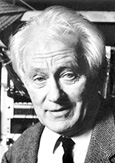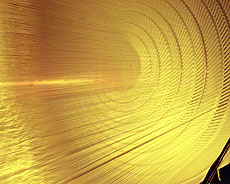Georges Charpak, detector pioneer, dies at 86
 |
Georges Charpak
Image courtesy of The Nobel Foundation |
Nobel laureate Georges Charpak, a pioneer in the art and science of particle detection, died on Sept. 28.
"Charpak was a legend in our field," said Fermilab Director Pier Oddone. "It would be hard to find an experimentalist today who has not used one of Charpak's inventions."
Born in Poland in 1924, Charpak moved to Paris at the age of 7. He joined the French resistance during World War II, was arrested and imprisoned by the Vichy government and sent to the Nazi concentration camp at Dachau, where he remained until the camp was liberated in 1945. Charpak become a French citizen in 1946. He attended the elite French engineering school, the École des Mines, and joined the CERN staff in 1959.
Charpak developed a host of particle detectors used throughout experimental particle physics. In 1968, he invented and developed the first multiwire proportional chamber, for which he won the Nobel Prize in 1992, the last time a single person has won the Nobel Prize in physics.
The multiwire chamber differed from earlier detectors in the speed with which it could record particle tracks from a collision-millions per second, rather than one or two per second for bubble chambers. The speed of the multiwire chamber and its successor technologies, along with their extraordinary precision, led to a revolution in particle physics and to the discovery of particles such as the J/psi and the W and Z bosons, which also earned Nobel prizes for their discoverers. The technology that Charpak pioneered also finds applications in medicine and industry.
Fermilab physicist and fellow Nobelist Leon Lederman served as Fermilab director during the time Charpak participated in experiments at Fermilab.
"Fermilab physicists are saddened by Charpak's passing," said Lederman. "His contributions to high-energy physics were greatly appreciated by the community."
-- Judy Jackson and Kathryn Grim
 |
| Charpak devoloped the wire chamber design that CDF used for its central tracking chamber. |
|